
Life in the good old days was simple. You just had to set up a brick-and-mortar store, advertise in newspapers, billboards, or TV, and then just wait for the customers to arrive. You try doing it today, and you’d be called sluggish. Sitting back and waiting for customers is not an option in today’s internet-driven world. You have to make them choose you, even if they are ambivalent about it. This magic is spelled on users with the help of CRO marketing.
CRO or Conversion Rate Optimization is the process of improving a website, landing page, marketing campaign, or call-to-action to increase the number of users who take a desired action. Now, what could be termed as ‘desired action’ can vary based on the end goal of a business. We have explained that in more detail below.
To put it simply, CRO is a way to turn window shoppers into actual shoppers who are convinced into spending their money on your product or service so that you generate revenue.
Should you worry about CRO marketing?
Definitely. Every product, business, or service needs to make money. That happens when potential buyers take action. CRO has a number of benefits for both big and small businesses.
For starters, it helps you identify the choke points on your websites. Choke points are those areas from where customers bounce off without taking the desired action. These pages might be tough to navigate or have an unappealing user interface that makes customers unhappy. Improve those, and you can skyrocket conversions. Any optimization leads to improved user experience, and a highly functional website boosts confidence among the users. According to a report, 88% of online users are unlikely to return to a website after a poor experience.
CRO is an effective tool to stay ahead of the competition. How? Well, optimization means experimenting to constantly improve and become better. When you only deploy tested strategies that work with your audiences, you are already beating your competition by being people’s first choice.
Finally, CRO gives you a trove of numbers to track your success and calculate the ROI of your marketing campaigns. With these numbers, people can make informed choices and measure and spend money where there is a high chance of ROI. With this data-driven strategy, any company can improve its financial position through wise spending and high returns.
However, CRO varies for different businesses based on several factors: the type of business, target audience, industry, goals, objectives, etc.
Here are some factors that must be considered before opting for CRO marketing:
Goals and metrics: Each business may have unique goals and metrics they want to optimize for. For example, an e-commerce business might focus on increasing the conversion rate for product purchases, while a lead generation website may aim to improve form submission rates. The specific goals will shape the CRO strategies and tactics used.
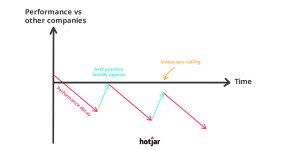
Target audience: The first step for every optimization, not only CRO, is to understand who you want to target. Each product or service caters to a different segment of the audience, for example, a health insurance company can have a very diverse audience, but a company selling alloy rims only caters to car owners. Once the audience is determined, it’s important to identify their demographics, preferences, behaviors, motivations, and buying habits.
Customer journey and touchpoints: Every action that a customer takes on a website – from the first click to the final purchase – is part of the conversion journey. These journeys vary in type and length for every business. For example, for a news publication, the funnel starts when a reader visits the website and ends when they sign up for their newsletter. However, for a software-as-a-service (SaaS) company, the conversation, or onboarding process, will be more nuanced. Understanding your customers’ journey and optimizing each touchpoint is essential for an effective CRO.
Resources: Resources are the biggest consideration when it comes to CRO. A company can spend only a portion of its marketing budget on CRO. So its important to determine what tool or technology could be used. A big business might have a dedicated CRO team with separate testing tools and access to advanced analytics. Smaller businesses tend to focus more on cost-effective strategies like usability testing, heatmaps, or qualitative feedback.
CRO Best Practices
Now that we have outlined why CRO is important for business and how it varies for each business, let’s check out CRO best practices.
1.Data collection
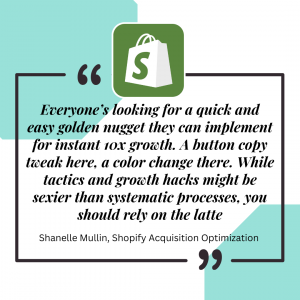
Mullen is absolutely right here. Every optimization relies on a systematic approach to yield the desired results. Without a strategy, backed by data, you are just shooting your shots in the dark, hoping one to stick. Without data, you have no idea what is working on your website and what is not. There are a number of data collection strategies to get you started with your CRO.
Google Analytics: Google Analytics is a conversion rate optimization expert in itself because it knows more about your website than even yourself. It has insights into even those corners of a website that developers might not even know exist. So, it’s a given that this trove of data can be used to cull out the blind spots that are wasting your CRO efforts and optimize those paying the dividends. But with so many numbers, it is easier to get carried away and focus on the wrong metrics. The most effective metric is to track conversion via mobile and desktop. If the bounce rate on mobile is high, your CRO strategy should focus on making the website more responsive.
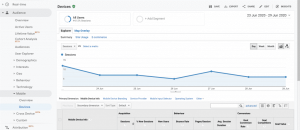
Another important dataset is the searches people are doing on your website. This gives you an insight into what people really want. Bringing that product to the front will optimize your conversion simply because now it takes fewer clicks for the user to take the desired action.
Heat map: Heat maps are vital to track consumers’ journey across the website. It gives you a visual snapshot of where users are clicking on the website, where they are scrolling or hovering. This information can be used to identify areas of a website that may be confusing or unappealing to visitors. Say if more clicks are centered at the top half of the website, you can place a CTA there for better conversions. Some of the best tools to visualize heat maps are Contentsquare, Glassbox, Mouseflow, Microsoft Clarity, Crazy Egg, Hotjar, and Inspectlet.
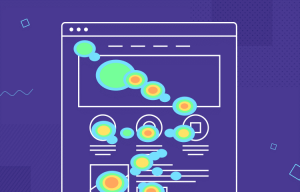
Feedback: What’s better than asking customers for whom you are taking the whole CRO exercise? Customers’ feedback is the evergreen method to incorporate their aspirations into your website UX. This feedback can be collected through survey forms; emails’ social media posts; community forums and discussion groups; and reviews, ratings, or testimonials.
2.Funnels
Funnel is the buzzword when it comes to online businesses. Basically, it’s just a track of each step from when the user arrives at the website, to when they go out. A funnel data can incorporate several metrics, including conversions, sales, and signups.

Funnels give you two endpoints: a) where the users are coming from, and b) where are they leaving from. Say you are an e-commerce company, and most people land on your website via direct Google search. This is an insight that you use to improve search engine optimization to rank your pages above in Google searches. The endpoint data can tell you if the customers are leaving after making a desired action or whether they are quitting abruptly. In the second case, you can use this data as a conversion optimizer to fix the website’s pain point and boost sales. This is one of the conversion strategy examples that can boost sales.
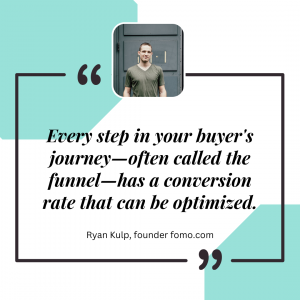
Some of the tools that make funnel analysis extremely simple are Google Analytics, Heap, Countly, Flurry, Firebase, Appflow.ai, and UXCam.
3.Create buyers persona

Buyers persona could be understood as a set of individual buyers’ attitudes that gives you a holistic idea of what your overall customers need or like. For example, buyer personas will tell you that your targeted audience is mostly youth aged 15-25 years, 24% of whom use TikTok. With this insight, you can focus on TikTok marketing to boost sales.
The insight from the buyers persona can be used to tweak website designs. For example, if you are selling skincare products for young women, your buyer personas will tell you that they are in the early stage of their professional careers and prefer discount deals. You can customize your home page or landing page so that it features more discounts or coupons.
There are several persona-generator tools to help you visualize key traits of different age groups within your target audience and generate buyer personas. Some of the best ones are Hubspot – Make My Persona, McorpCX, Xtensio, UXpresia, Delve AI, User Forge, and Smaply.
4.Optimize sweet spots
While CRO is a lot about fixing what is not working on your website to attract sales, there is also no harm in optimizing and improving what is already making money for you. This has two benefits: a) you can amplify the reward with minimal effort because it is already working, and b) this will also lead to an increase in traffic on your other web pages.
But the question is: How to improve something that is already working just fine? Well, it again comes down to data. For example, you are an e-commerce site, with three points in a customer’s journey. Point A is when they search for and land at a product page, point B is when they fill out all the details and click checkout, and point C is when they pay for the product, and the sale is closed. You can track how much time it takes for your customer to go from point A to point B or from point B to C. You can also track the number of clicks. Now see if you can simplify the process and cut some seconds or reduce the number of clicks.
What’s better than buying a product with just two clicks? Buying it with just one click.
5.Retargeting
Retargeting is one of the easiest CRO marketing strategies. But, it is different from remarketing. These terms are often used interchangeably, but there is a subtle difference. Remarketing means approaching your customers again, while retargeting is for those who still have the potential to become your customers.
For example, a user clicks on your social media ad and arrives at a landing page. They look through products and finally choose one. They check out, and just before the payment, they abandon the cart and bounce off. What triggers them? Apparently, nothing – maybe a last-second change of mind.
But at least they came to the second last step on the funnel, and this demonstrates their interest in your product. Now you can retarget them. Send them a casual reminder email that this product is still in their cart. If they have your application installed, hit them with a push notification. Make the deal enticing by throwing in a discount. Now you have spurred them into taking action. That’s retargeting.
Retargeting is simpler because websites are already saving cookies. They can be used to display banner ads as a part of the Google display network or customized social media ads.
Parting thoughts
Ending this blog by putting to use one of the CRO strategies we mentioned: feedback. If you find these tips helpful, reach out to us in the comments below. Tell us how we helped turbocharge your conversion. If you want to know more about CRO strategy, write to us, and we will incorporate it in our future blogs so that you keep coming to us because we always have what you want. Isn’t that what CRO is all about?